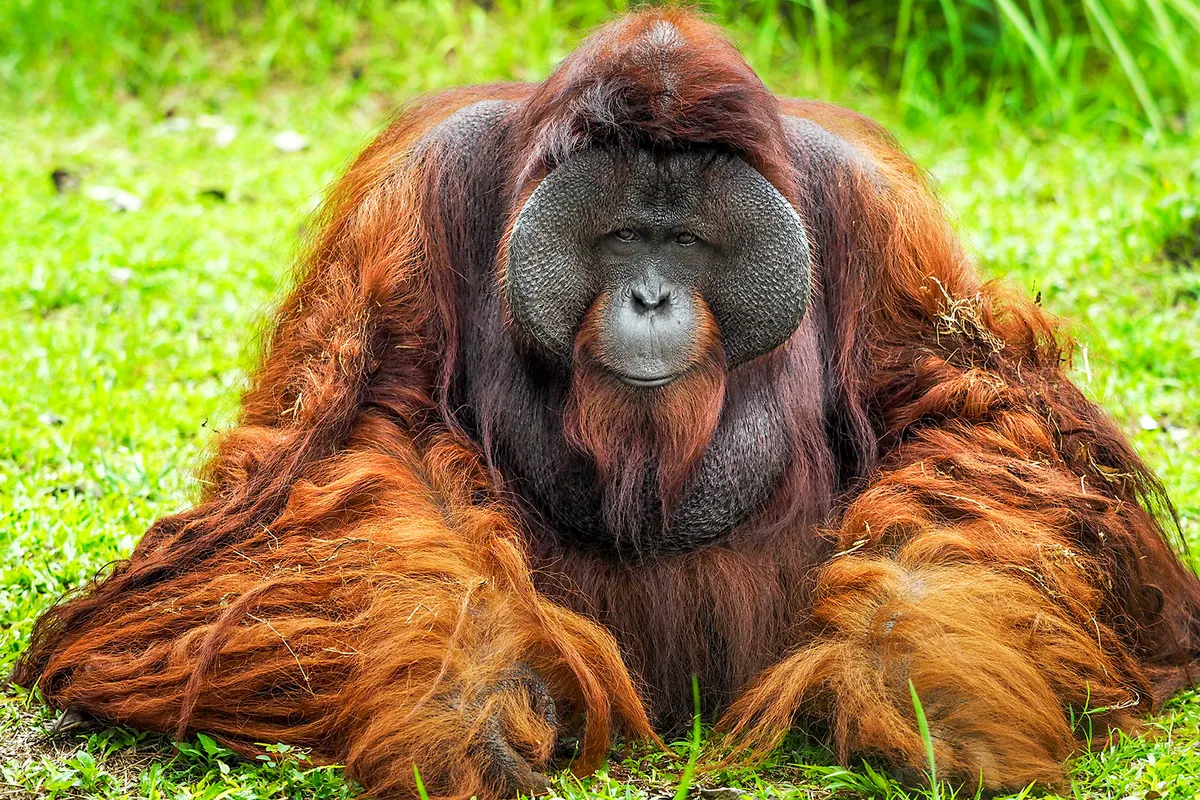Think you know your family? Well, think again. You might call yourself a Jones or a Patel, but you’re also a hominid – a great ape belonging to the family Hominidae.
What are great apes?
Bigger and brainer than all other primates, great apes are also distinguished by their sophisticated social structures and the way they exhibit culture. As well as humans, the family comprises orangutans, gorillas and chimpanzees – the latter two are our closest genetic relatives, sharing 98.7 per cent of their DNA with us.
How many species of great apes are there?
Great apes are made up of four genera: humans (Homo), orangutans (Pongo), gorillas (Gorilla) and chimpanzees (Pan). While there is only one species of human (Homo sapiens), the other three genera can be divided into seven species, so there are eight species in total.

When it comes to the orangutans, there are three species: Bornean, Sumatran and Tapanuli. The genera Pan, commonly referred to as chimpanzees, actually comprises two species: both chimpanzees and bonobos. Chimpanzees can be further broken down into four subspecies: eastern, central, Nigeria-Cameroon and western.
Lastly, there are two species of gorilla, the eastern and western. The eastern gorilla consists of two subspecies, the Grauer’s gorilla and mountain gorilla, and the western also consists of two, the western lowland and cross river.
Interestingly, all great ape subspecies are declining, except for the mountain gorilla, which is increasing.
Where do great apes live?
Humans are the most adaptable great ape and can be found living in almost every part of the world, but chimpanzees, bonobos and gorillas only exist in Africa, and orangutans are restricted to the islands of Sumatra and Borneo in South-East Asia. All non-human great apes generally prefer forest habitats.
What do great apes eat?
Great apes are vegetarian for the most part – they forage on leaves, stems and fruits. However, chimpanzees and bonobos occasionally eat meat, including insects, other primates and duikers (which are a species of antelope).
How big are great apes?
Great apes are considerably larger than other primates, such as lemurs, bushbabies, aye-ayes and marmosets, and gorillas are the heaviest. An adult male can weigh more than 200kg (roughly equivalent to three washing machines!), followed by an adult male orangutan, which can reach 90kg.
Chimpanzees and bonobos are smaller, with an adult male chimpanzee weighing up to 70kg and an adult male bonobo having a comparable body mass of up to 60kg, despite the widely held belief that bonobos are significantly smaller, perpetuated by their alternative name ‘pygmy chimpanzees’.
While there are marked size differences between the sexes in gorillas and orangutans, with males generally double the weight of females, there is no more than a 10kg difference between male and female chimpanzees and bonobos.
What is a lesser ape?
The lesser apes are gibbons, which are smaller than great apes and live in the forests of South-East Asia. There are 14 species and all of them are tree-dwelling, rarely venturing onto the ground.
Do great apes live in social groups?
Yes, great apes have elaborate social structures. Large groups of chimpanzees, bonobos and orangutans often break into smaller, temporary groups and then reunite, depending on food availability (a set-up known as fission-fusion society). Great apes have also been observed demonstrating cultural variations: behaviours that are passed down from generation to generation within different populations, including tool-use and vocalisation.
How do they reproduce?
The mating systems of great apes are complex and determined by the social status of males and the attractiveness of females. Generally, great apes don’t reproduce until they are at least 13 years old. The gestation period ranges from 200 to 290 days across all species. In non-human great apes, the period between consecutive births ranges from about five to eight years.
How long do great apes live?
Roughly 50-60 years in captivity, though fewer in the wild.
How intelligent are great apes?
Great apes have larger brains than other primates and demonstrate an ability to reason, show empathy, imitate and perceive what others might think.
Can great apes swim?
There have been reports of great apes swimming and diving.
How do great apes communicate? Why can only humans 'talk'?
Great apes communicate in several ways, including vocalisation and gesturing. Non-human apes are unable to talk because they lack vocal chords, which manipulate air movements to produce desired sounds.
- The world’s 25 most endangered primates
- What are the smallest monkeys and primates in the world?
- Do monkeys get drunk? Scientists find out the truth
- What are Old World Monkeys?
Nakedi Maputla is a conservation scientist for African Wildlife Foundation